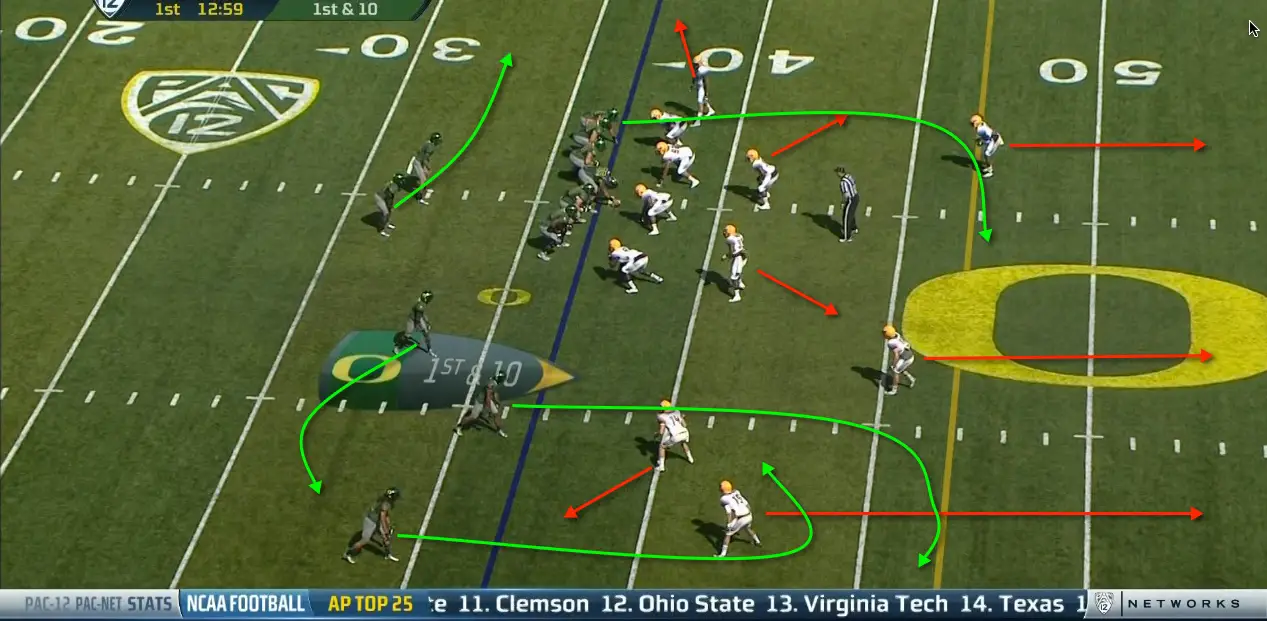Have you ever wondered why Oregon’s offense is so successful? There are a multitude of reasons, but one that we are going to look at today is how the running and passing game form such a wonderful marriage. It is no secret that we have many weapons on the offensive side of the ball as the offensive staff at Oregon have found many ways to get all of the special athletes involved. Over the years we have been blessed with elite speed in the backfield that make teams respect our running game; thus, our play-action passes have been lethal.
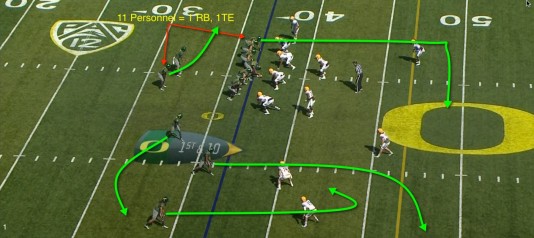
The picture above shows us that Oregon is in “11” personnel, which means that we have 1 running back and 1 tight end. (We will cover personnel in more detail at a later time). I have diagrammed the play so you could see what the play is supposed to look like after the snap. We basically have a flood pass right, with the tight end (upper green line) running a dig route on the backside (or the old down-and-in).
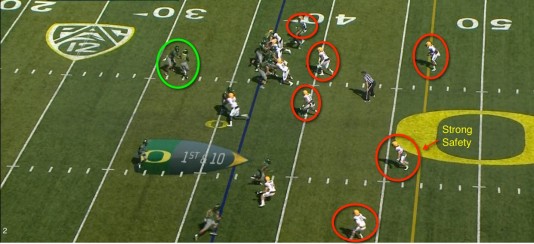
At the snap (above), Mariota gives a simple mesh fake to the running back to slow up some of the defenders. As I mentioned, we have some gifted running backs so teams must respect our run game, while the offensive line also does a great job of not giving away the upcoming pass play. The offensive line takes flat zone steps to the left to make sure they do not come up-field, thus helping to sell the run play. The offensive line play with the mesh/run fake does enough to hold up defenders for a precious moment. From the time the ball is snapped, to the mesh/run fake, two seconds has passed. In this short amount of time, “paralysis by analysis” comes into play. As defenders, you have specific reads, keys, and assignments on every play and offensive coaches are always looking for ways to get the defense to do what the defenders are not coached to do. In this picture you can see six players, circled in red, peeking into the backfield. Typically, defensive backs will take three “read” steps backwards to analyze the play. In the picture (above), the strong safety sees the mesh/run fake and begins to take steps forward instead of backwards to defend the run. This is the strong safety’s first mistake of the play.
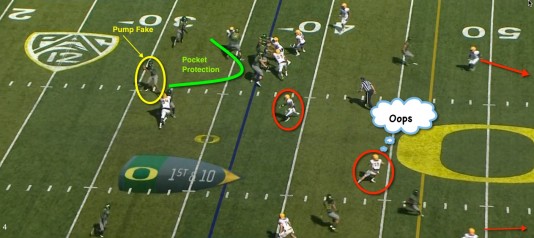
In the next frame, we see Mariota sitting back with plenty of time in the pocket. You can see Mariota look to his right, going through his progressions before giving a hard pump fake, and this is where mistake number two takes place for the strong safety. As Mariota pump fakes to the right, both the strong safety and the play-side linebacker take the bait and bite, thinking the ball is coming that direction. This mistake by the defense just creates more grass for Mariota’s targets to work with.
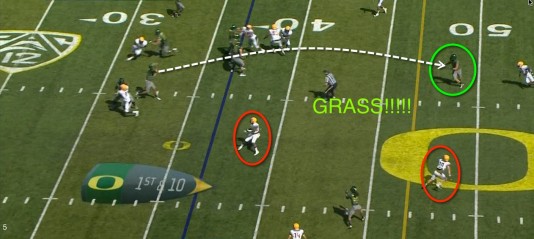
Now we see how the play fake to the running back and the pump fake to the three receiver side created grass for the backside tight end to get wide open. We have all heard that football is a game of inches, and in this scenario you are able to see how small mistakes on the defensive side of the ball can create big plays for the offense. For a freshman quarterback to have this much time to throw and have throwing lanes this wide — well, it makes throwing your first pass of the game that much easier.
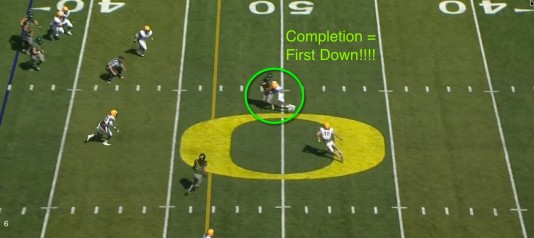
The final picture above shows the first play of a series being a completion for a first down, to a wide-open tight end. This was the first play of the first series in which the Ducks used multiple play action passes to move the ball steadily up the field against Tennessee Tech.
After looking at how Oregon used the play action passes in this game so effortlessly, it made me wonder — is it the Duck or the Egg that came first? Or in this case, the running game or passing game? I do not know the answer to that question, but I do know you can’t have one without the other!
I may be in Texas, but like you…”Oh how we love to learn about our Beloved Ducks!”
Todd Moore
Related Articles:
Todd (Football Analyst) is a former high school defensive coordinator and current administrator in education. He is a football enthusiast of all levels and loves to talk ball to anyone who will listen. He has coached in a spread offense and while coordinating defense used a 4-3 and odd stack. He has coached the offensive line, wide receivers, linebackers and safeties. Todd currently reside in the great state of Texas with his wife and two beautiful daughters.

